Having a firearm for self-defense is a good idea, but keeping it secured and available for use on a moment’s notice is challenging. On one hand, it’s smart to keep your firearms unloaded and locked up to prevent kids and intruders from accessing or stealing them. However, an unloaded, locked-up gun won’t protect you from an imminent threat. If you have to open a safe and load your gun to protect yourself from an armed threat, you may not survive.
If you’re wondering how you can safely store your home defense firearm and make sure it’s available when you need it, here’s what you can do.
Contents
Get a gun specifically for home defense
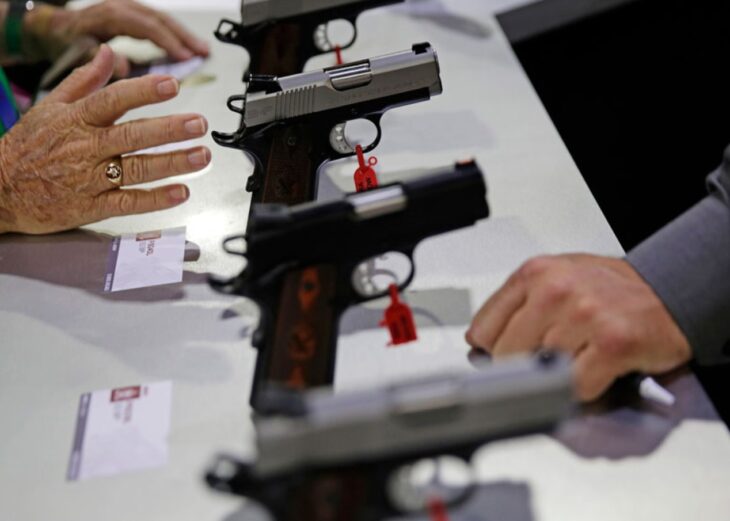
Source: Center for American Progress
Many gun owners have a variety of firearms, but don’t have a designated home defense weapon. That’s a bad idea. If you rely on being able to grab any gun you can get during a threatening situation, you might be out of luck.
Do you store your firearms in the same place each time you put them away? Do you keep your firearms unloaded and cleared, or do you sometimes leave spent rounds in the chamber? For example, say you’ve got a double barrel shotgun and you’re not in the habit of clearing the chamber after you fire both rounds. If that’s the weapon you grab in an emergency, it will take too long to clear the chamber and then load more rounds.
The best solution is to buy a gun specifically for home defense and don’t use it for sport. That way, you’ll always know the condition and you won’t have to scramble to load it at the last minute. If you haven’t chosen one yet, Primary Arms has great deals on Glocks and other handguns that are great options for home defense.
While there’s nothing wrong with relying on a rifle or shotgun for home defense, long guns can be harder to grab in an emergency since they require more space to store. Plus, if you miss your target with a shotgun, you could end up doing serious damage to your house.
Choose the right storage method
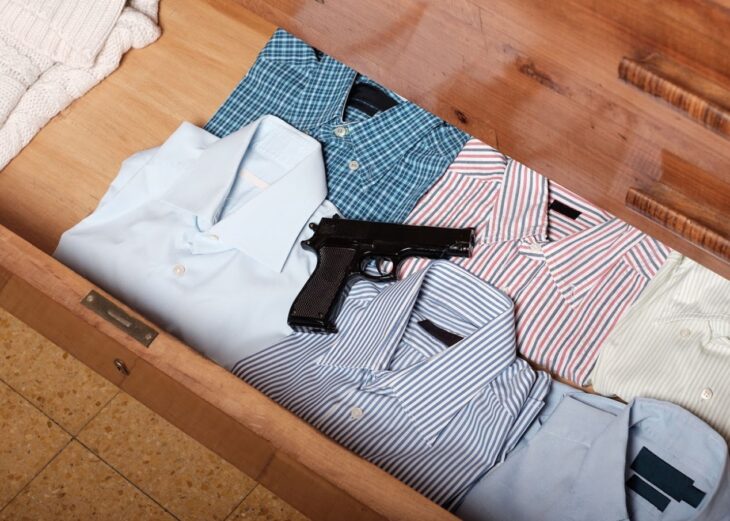
Source: Medium
Once you have a designated home defense firearm, you’ll need a good way to secure it in your home. There are many ways to secure a firearm, and not all are equal. There are pros and cons to each storage method, but some are better than others. Your ideal storage method also depends on who lives in your household. For example, if you have small children, you don’t want a storage solution that is easily accessible (like a closet or dresser drawer).
There have been many incidents of gun violence where teenagers have stolen their parents’ guns right out of the closet or dresser drawer. Even when you teach your children how to shoot and teach them gun safety, you can’t always know what’s going on in their mind. Children should have access to your weapons only under your direct supervision.
Things are different in certain parts of the country where kids as young as 8 need access to a long gun to protect the family’s farm animals from predators like raccoons, opossums, coyotes, and cougars. However, even if you need to keep a long gun accessible to everyone in your household, you still need a separate home defense weapon your children cannot get their hands on.
Biometric gun safes are secure
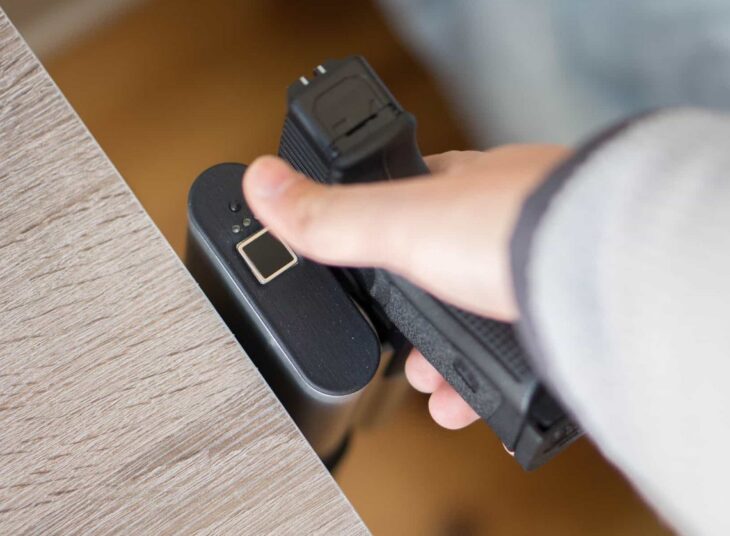
Source: Gun Safe Guru
If you’re looking for a way to secure your firearm from everyone who sets foot in your house, a biometric safe will do the trick. A safe that requires your fingerprint or palm print to open won’t be accessible to anyone but you. It would take a huge effort to create a fake finger with your fingerprint and most people wouldn’t go to that trouble.
Biometric safes might be a problem in an emergency
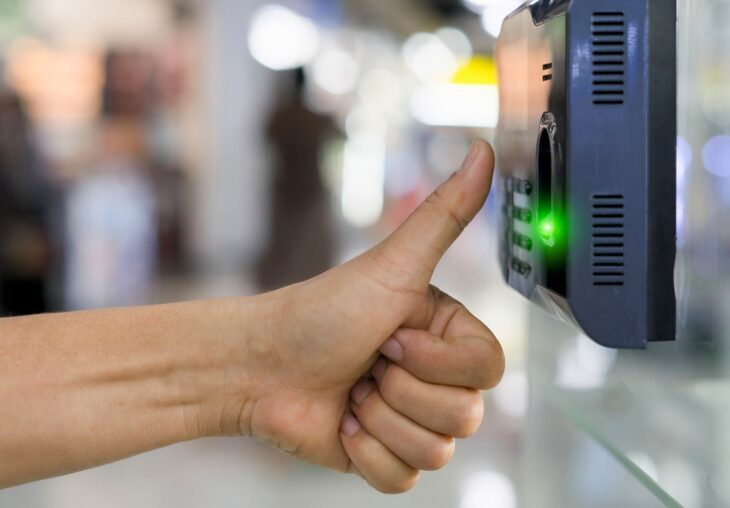
Source: Whizlans Solutions
The downside to a biometric safe is that only you can open the safe. If someone else is closer to your safe when you need your weapon, they won’t be able to open the safe. This could be a disaster in a serious situation. However, if you live alone and don’t anticipate anyone else needing to access your self-defense firearm, a biometric safe is a great option.
Simplex mechanical safes
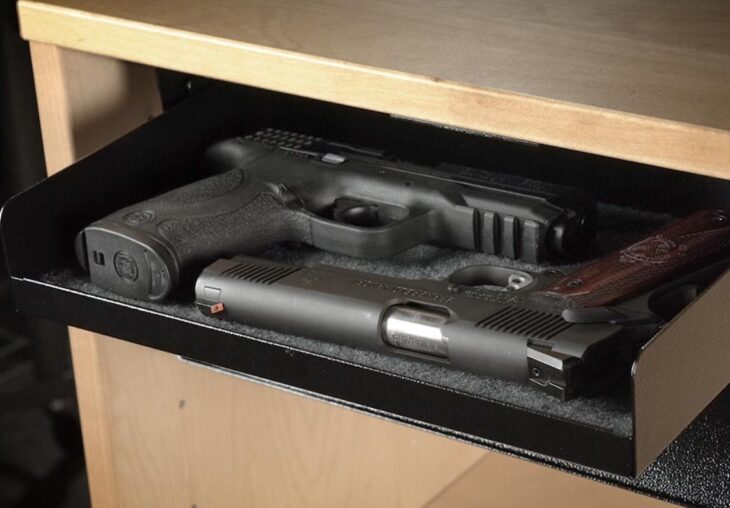
Source: Lucky Gunner
There is a bedside gun safe on the market that opens manually when you push only the pre-programmed buttons in your chosen pattern. However, these safes are easily cracked by a determined teenager since there are only 540 possible patterns for safes with five buttons.
The Fort Knox Simplex, on the other hand, requires a two-stage manual code, which increases the complexity of cracking your code to 1,081 unique combinations. It’s not ideal, but it’s better than manual mechanism safes with limited possible combinations. You can watch a review of the Fort Knox and other bedroom quick access safes here.
Do you need a safe at all? Maybe not
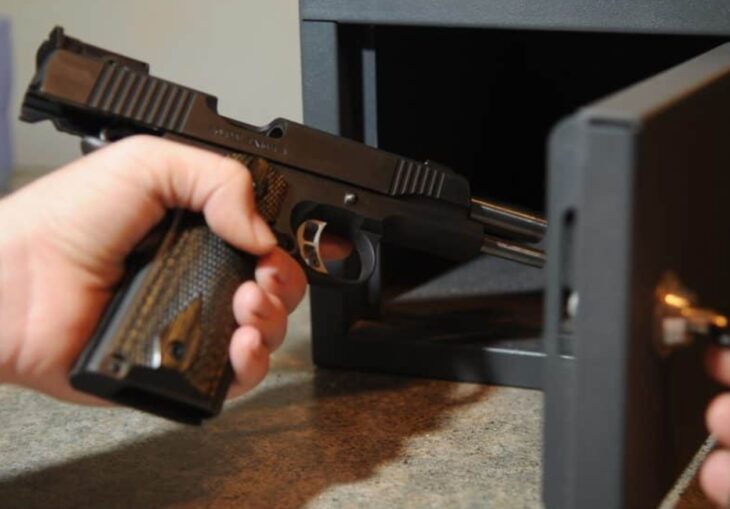
Source: Defense Firearm
If you live alone in the country and don’t have many visitors, it’s not a terrible idea to keep a rifle or shotgun by your front door or in your closet. However, if you have children, this could be a bad idea.
There are exceptions, of course. There have been times when kids have grabbed a rifle from their parents’ bedroom to ward off an intruder. For example, in 2016, an 11-year old shot an intruder fleeing from the scene with a 9mm handgun. In 2012, an intruder broke into a house where a 12-year old was home alone. She called her mom, who instructed her to grab the family’s gun and hide in the closet. She shot the intruder through the door when he started to turn the knob.
Although there are situations where access to a weapon has saved lives, it’s always risky to leave firearms out where kids can access them, especially if they’re not trained.
Be selective with your weapon and storage choices
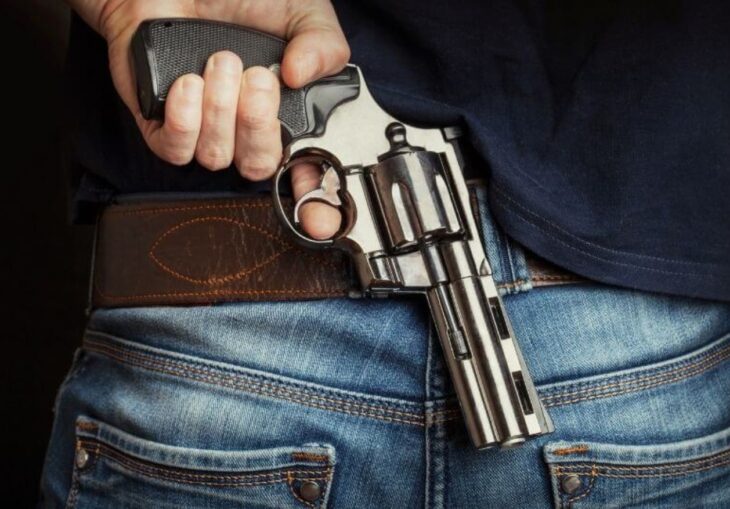
Source: Pinterest
How you store your home defense weapon is just as important as the weapon you designate for home defense. Don’t just rely on the cheapest storage solution you can find. Choose a solution that will keep your weapon secure and quickly accessible.
